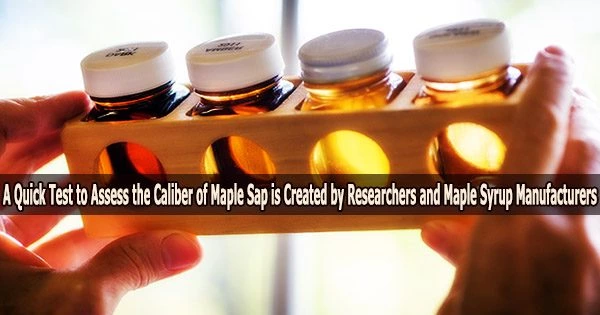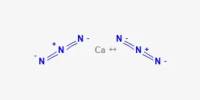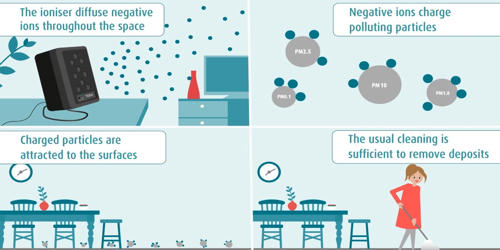Quebec is a global leader in the manufacture of maple syrup, and its “liquid gold” is prized for its superior quality. The Quebec Maple Syrup Producers Association has teamed up with researchers at the Université de Montréal to create a portable test that can gauge the quality of the syrup based on the harvested sap in order to uphold this high standard.
Dubbed the “COLORI test,” the method developed by UdeM’s chemists and mathematicians has been scientifically validated. The results were published Tuesday, March 21, 2023, in the journal ACS Food Science & Technology.
“Thanks to the support of the Consortium for Research and Innovation in Industrial Bioprocesses in Quebec, we were able to develop the COLORI test, patent it and produce the first 250 units,” said Jean-François Masson, an UdeM chemistry professor and lead co-author of the scientific paper. “All the tests have already been used by the maple syrup producers who participated in our project.”
Fast and simple nanotechnology
The new COLORI test is a member of the nanotechnology family and is quick and simple to use. A little tube carrying a suspension of gold nanoparticles is the first component, to which few drops of sap are later added.
Quality is a top priority for Quebec’s maple syrup producers. The COLORI test, which will be widely available as of 2024, offers our industry a unique tool to fine-tune our processes and maintain the reputation of Quebec maple syrup.
Luc Goulet
The amino acids and amines attach to the gold nanoparticles, causing them to clump together and alter the way light interacts with the solution. These changes in flavor of maple syrup are associated with particular changes in amino acid and amine composition. As a result, within minutes, the solution’s color changes from red to blue and is visible to the unaided eye.
This test’s principal benefit is that it can be conducted at the sugar shack, where the results can be quickly deciphered and utilized to guide action. In order to enable the manufacture of premium maple syrup, this extremely sensitive and thus highly successful approach delivers trustworthy information about the qualities of maple sap in real-time.
“We encourage partnerships between companies and the public research community to create innovative solutions that meet specific needs and are commercially viable,” said the Consortium’s president and CEO, Mohammed Benyagoub. “The innovative COLORI project aligns with our mission to strengthen relationships and industry-university collaborative research by helping Quebec’s maple syrup industry ensure optimal purity of the syrup it brings to market.”
From detection to prediction
The COLORI test for identifying unfavorable substances in maple products is based on an earlier technique created in Masson’s lab in 2018 with the assistance of Simon Forest, who was at the time Masson’s research officer and is now the producers’ association’s project manager for development and applied research.
The first version of the test correlated the intensity of natural aromatic profiles of maple syrup (such as flavor profiles associated with sap and bud characteristics) to the result of the test.
“The COLORI test, which is now in its second version, has become predictive: it works with the maple sap and can determine if the compounds present in the sap harvested by the producer will yield high-quality maple syrup,” explained Forest, who also holds a master’s degree in chemistry from UdeM. “The test has proved useful as a decision-support tool: for example, to decide whether or not to boil sap that would not produce the desired quality of syrup.”
The two chemists requested QMSP to co-develop the new version of the test utilizing a participatory science approach in order to transition from the first-generation COLORI test to the predictive COLORI test, which offers details on the organoleptic profile of the sap.
A number of maple syrup producers who took part in three phases of field testing made it possible for this new COLORI test, which needs no infrastructure at the sugar shacks.
Masson and Forest also called on the research team of Morgan Craig, an UdeM mathematics professor, to build a mathematical model that predicts the type of maple syrup that will be produced based on the molecular profile of the sap, including its amino acids.
“Their model provides a sense of what the final product will be like, and allows maple syrup producers to better manage production,” Masson explained.
Soon to be widely available
Maple syrup production is one of the main drivers of Quebec’s biofood sector. In 2022, the maple syrup business contributed $1 billion to Quebec’s GDP. The province is the world’s top producer of maple syrup, making up about three quarters of the total production with 13,300 producers and a total output of 95 million kilograms in 2022.
To establish its market value, Quebec maple syrup is rigorously tasted, inspected, checked and classified according to criteria set out in the Convention de mise en marché du sirop d’érable, a marketing agreement developed by the QMSP.
Large-scale implementation of the COLORI test would help maple syrup producers manage their production throughout the season and allow them to evaluate and classify maple sap at cheap cost before turning it into maple syrup.
“Quality is a top priority for Quebec’s maple syrup producers,” said Luc Goulet, president of the producers’ association. “The COLORI test, which will be widely available as of 2024, offers our industry a unique tool to fine-tune our processes and maintain the reputation of Quebec maple syrup.”
















